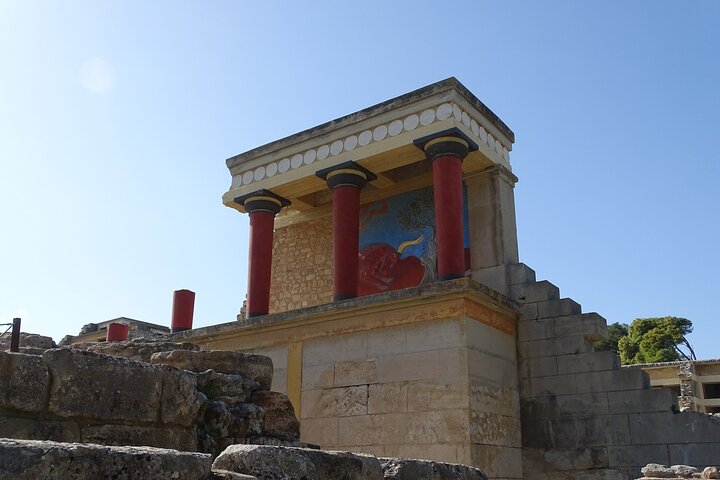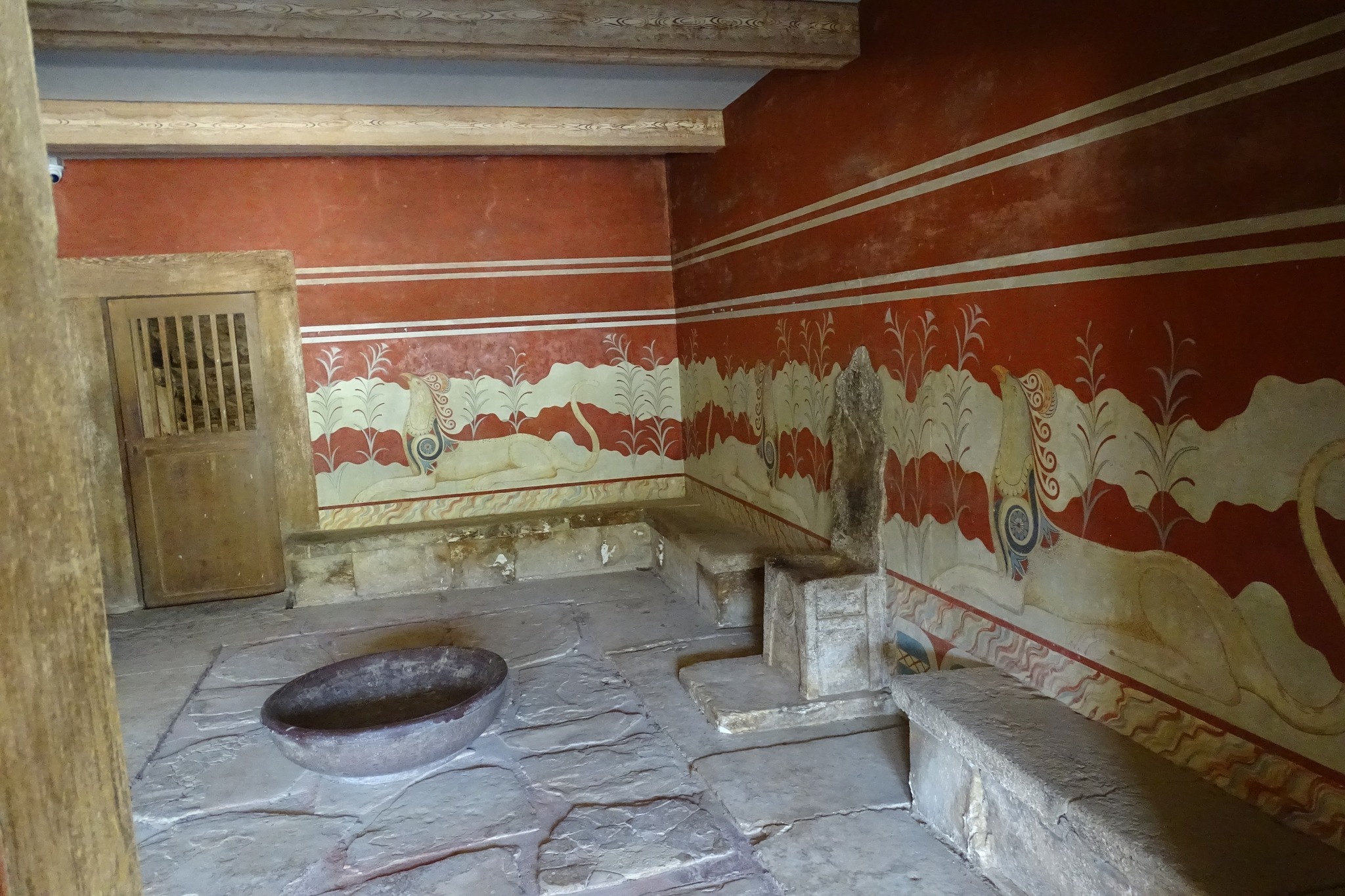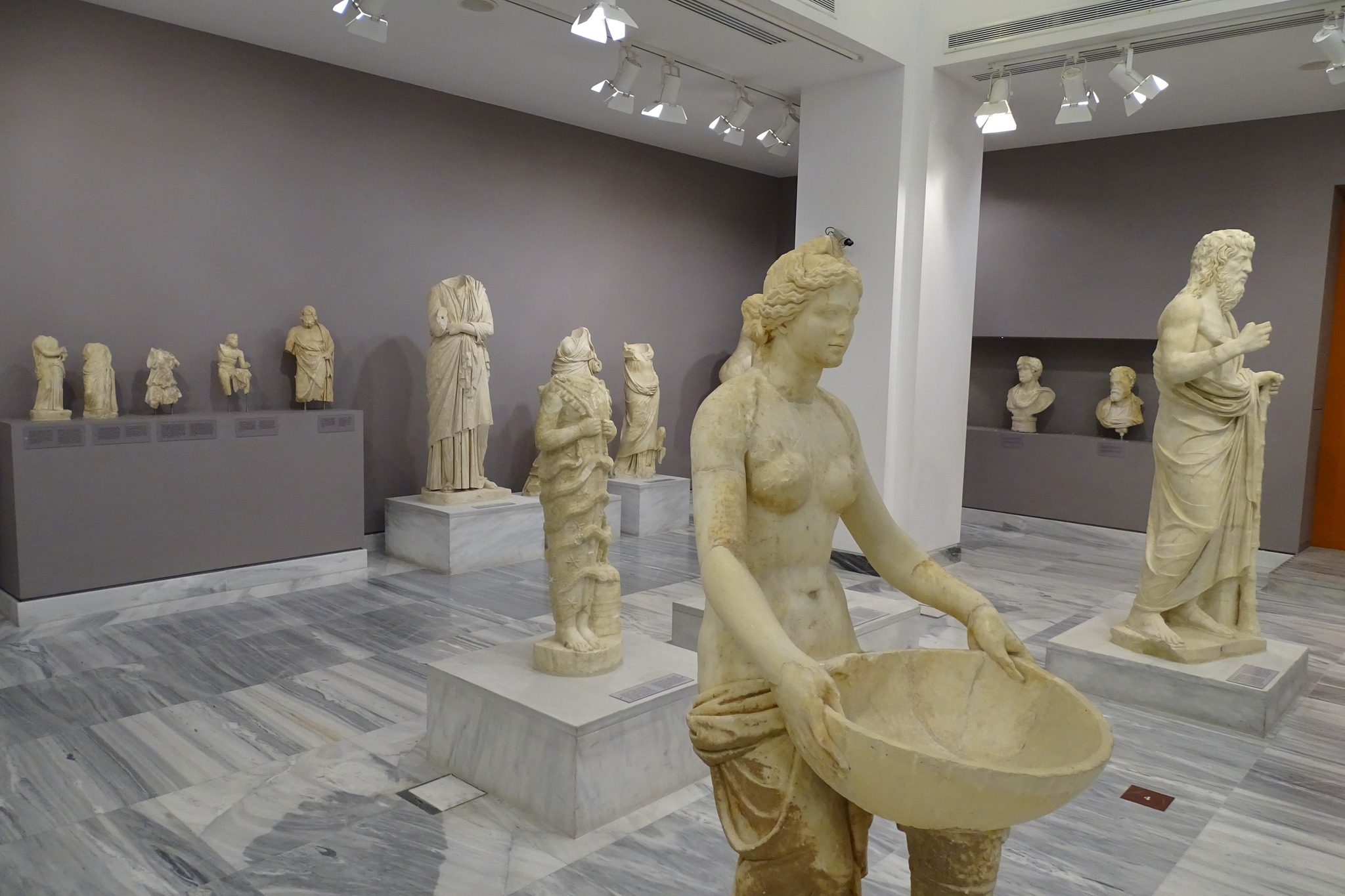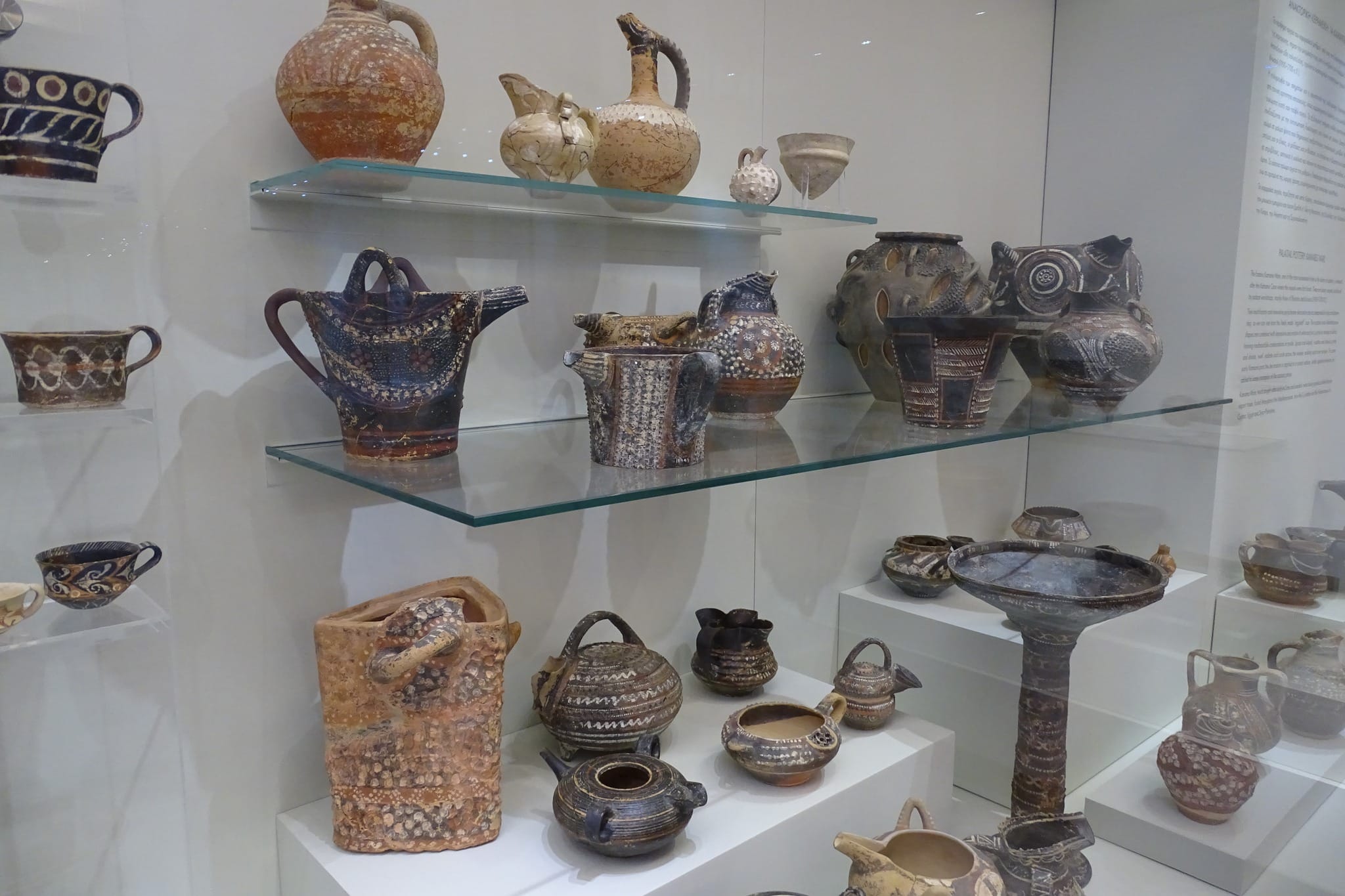Skip the Line to Knossos Palace and Archaeological Museum – Private Tour with licensed Tour Guide
Visiting Crete, but without visiting the Knossos Palace and Archaeological Museum of Heraklion, you haven’t visited anything.
You MUST, visit these two sites because there you will find and meet the Cretan history since antiquity.
The Knossos Palace is an archaeological site located on the island of Crete, Greece. It is considered one of the most important and impressive Bronze Age sites in the Aegean Sea, and is believed to have been the center of the Minoan civilization. The palace was built around 1900 BC and was inhabited for several centuries, until it was destroyed by fire around 1450 BC.
The Knossos Palace was rediscovered in the early 20th century by British archaeologist Sir Arthur Evans, who conducted extensive excavations and reconstructions of the site. The palace is a complex of interconnected buildings, with over 1,300 rooms and corridors covering an area of more than six acres. It is believed to have been a royal residence, as well as an administrative and religious center.
The architecture of the Knossos Palace is characterized by its large, airy rooms and intricate decorations, including colorful frescoes depicting scenes from everyday life, religious rituals, and mythological stories. The palace also features a number of impressive architectural innovations, such as light wells and complex plumbing systems.
One of the most famous features of the Knossos Palace is the labyrinth, a complex network of interconnecting chambers and passageways that is said to have housed the mythical Minotaur. The labyrinth was likely used for religious rituals and may have served as a symbol of the Minoan civilization’s power and influence.
Today, the Knossos Palace is a popular tourist destination and a UNESCO World Heritage Site.
Visitors can explore the ruins of the palace and see many of the original frescoes and architectural features, as well as learn about the fascinating history of the Minoan civilization.
The Heraklion Archaeological Museum showcases an extensive collection of artifacts spanning over 5,500 years, from the Neolithic period to the Roman era. It is home to some of the most significant finds from the Minoan civilization, which flourished on Crete between approximately 2700 and 1450 BCE.
As you step into the museum, you will be captivated by the grandeur of the exhibits. The vast halls are filled with awe-inspiring sculptures, intricately decorated pottery, and beautifully preserved frescoes that offer a glimpse into the ancient world of Crete. The museum’s layout is thoughtfully designed to guide you through different historical periods, providing a comprehensive understanding of the island’s past.
Among the highlights of the museum is the Phaistos Disc, an enigmatic artifact discovered in the Minoan palace of Phaistos. Its circular shape and mysterious symbols continue to baffle scholars and visitors alike, sparking debates about its purpose and meaning. Marvel at the intricacy of the disc and ponder its secrets.
Another notable exhibit is the Bull-Leaping Fresco, depicting an exhilarating scene of acrobats leaping over charging bulls. This masterpiece, discovered in the palace of Knossos, exemplifies the Minoans’ fascination with athleticism and the natural world. Admire the vibrant colors and dynamic composition of this ancient artwork.
The museum also houses a remarkable collection of Minoan jewelry, including delicate gold necklaces, intricately crafted earrings, and ornate ceremonial objects. These precious artifacts showcase the Minoans’ exceptional skill in metalworking and their reverence for beauty and adornment.
As you explore further, you will encounter statues of deities, such as the iconic Snake Goddess, representing the ancient Cretans’ religious beliefs. The vividly painted statuettes reveal their spiritual practices and offer insights into the complex mythology of the Minoans.
In addition to the Minoan treasures, the museum features exhibits from later periods, including artifacts from the Archaic, Classical, and Roman eras. Marvel at the marble sculptures, admire the finely painted vases, and learn about the diverse influences that shaped Crete’s cultural landscape.
Throughout your visit, informative displays, interactive exhibits, and multimedia presentations will provide context and deepen your understanding of the archaeological finds. The museum’s knowledgeable staff is also available to answer any questions and offer further insights into the exhibits.
As you leave the Heraklion Archaeological Museum, you will carry with you a newfound appreciation for the remarkable civilization that once thrived on the island of Crete. The artifacts you have encountered serve as a testament to the creativity, ingenuity, and cultural legacy of the Minoans, leaving an indelible impression on all who visit this extraordinary institution.
This experience will remain unforgettable for the rest of your life.
-
DepartureHeraklion
-
Departure Time8.00-9.00
-
Return Time13.00-14.00
-
IncludedLicensed tour guidePick up & Drop off from your hotel/portVehicle depends on your group size: taxi or minivanProfessional English speaking Driver/GuideAll service charges and taxesChild Seats (on Request)Liability Insurance
-
Not IncludedArchaeological Museum tickets 14 Euro per personKnossos Palace tickets 15 Euro per person
Similar Tours
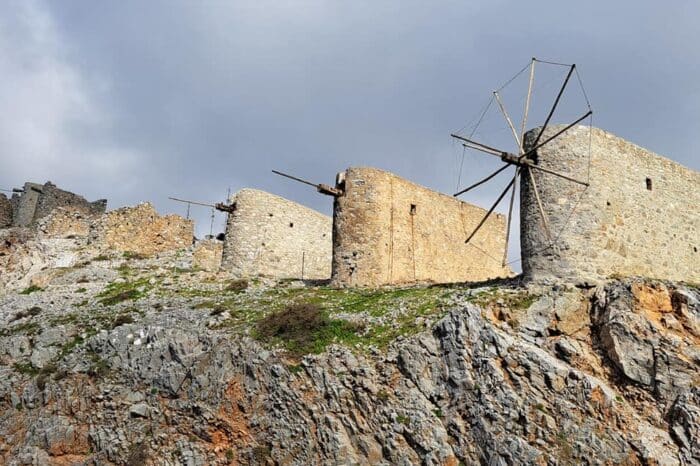
Lasithi Plateau, Zeus Cave, Wind Mills, Olive Oil Tasting – Small Group
This tour offers an immersive experience for nature and culture lovers, featuring the Zeus Cave, traditional villages, and a taste of local life in Lasithi, Crete’s mountain region known for its ancient windmills and fertile plateau. Mythology Traditon Hospitality and […]
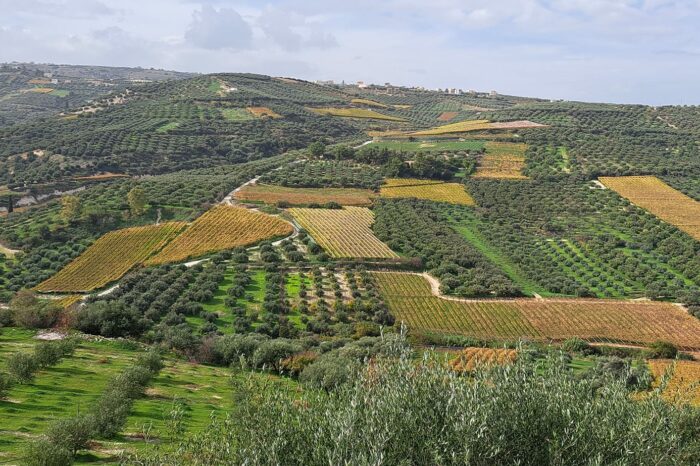
Wine Olive Oil Tasting & Pottery – Private Tour
Discover Crete’s rich wine culture on a private tour of Peza, Crete’s top wine and olive oil region. Visit two premier wineries, tasting award-winning wines made from indigenous grapes like Dafni and Liatiko, alongside renowned international varieties. Learn wine-making secrets, […]
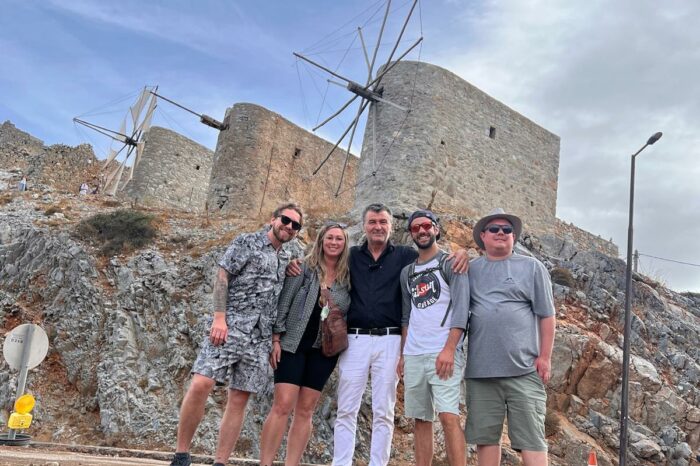
2 Days Tour – Knossos Palace Archaeological Museum – Lasithi Plateau & Wine Tasting
Enjoy this 2 days private tour and visit some of the highlights of Crete Island. Visit Knossos Palace,Archaeological Museum, Lasithi Plateau and It’s traditional villages, an Olive oil factory, a Pottery and have a wine and olive oil tasting in […]

Southern Crete – The Hippies Caves of Matala
Matala is a small village located on the south coast of Crete, known for its beautiful beaches, crystal clear waters, and the famous Matala caves. Here’s a suggested itinerary for a day tour to Matala: 8:00 AM – Pick up […]

